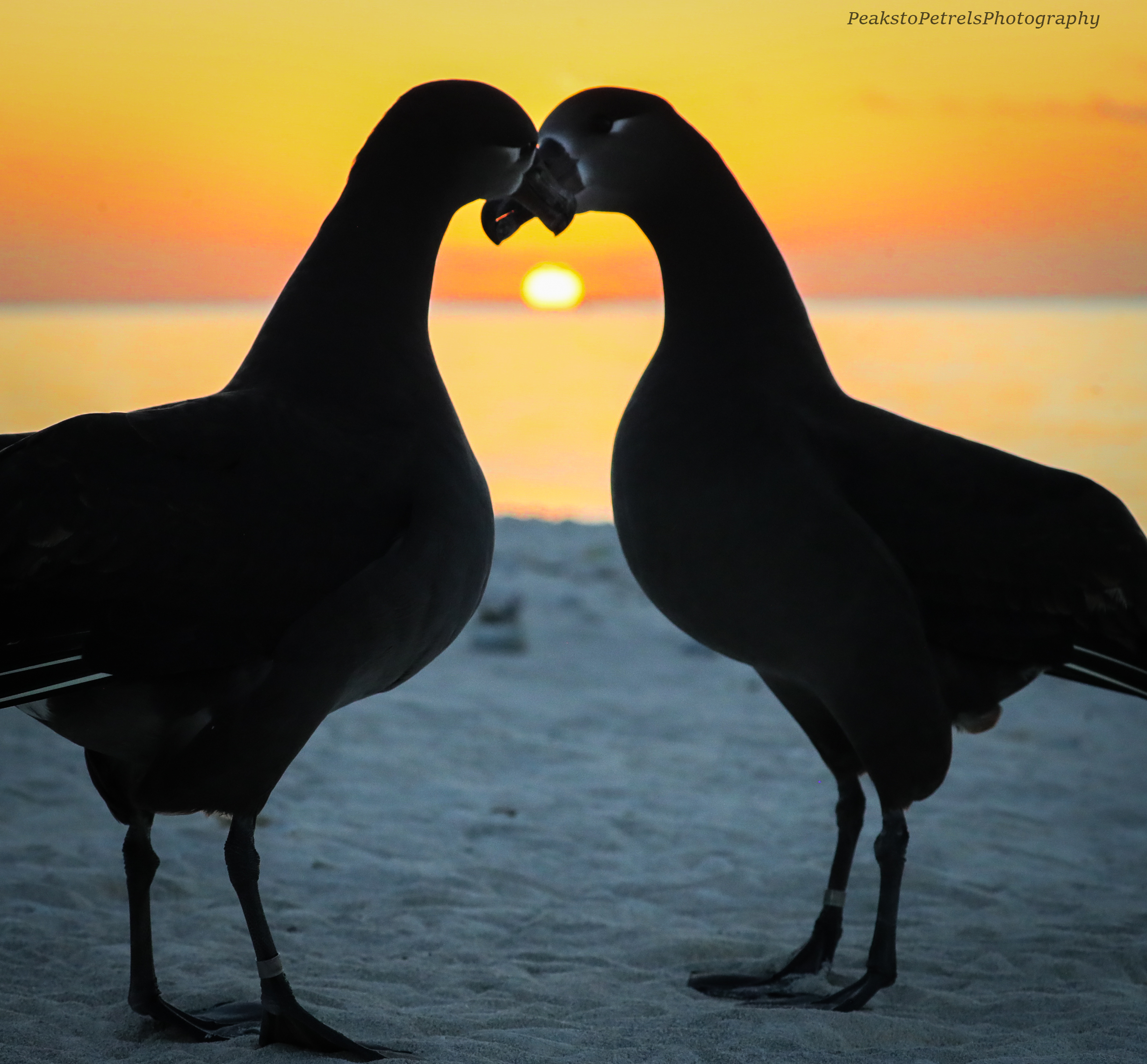
Two Black-footed Albatrosses (ka‘upu) court at sunset on Hōlanikū
Note. It has been some time since a guest has written and illustrated an ACAP Monthly Missive. Here is one by Isabelle Beaudoin, an aspiring seabird biologist who is currently on Kure Atoll in the Northwestern Hawaiian Islands. Enjoy!
*****************************************
I am on Hōlanikū (Kure Atoll) in the North Pacific as a habitat restoration and seabird conservation technician for seven months during the 2024/25 winter season, as part of a team of five. I work for the Kure Atoll Conservancy, the State of Hawai’i Department of Land and Natural Resources, Forestry and Wildlife, and for Oikonos Ecosystem Knowledge.
Hōlanikū’s main island, Green Island, is 78 hectares of sand and low vegetation, with a decommissioned runway from the US Coast Guard years in the 1960s to 1990s. It is the oldest atoll in the northwestern Hawaiian Island chain, and the northernmost atoll in the world. It also must be one of the most isolated field camps on earth. It falls within the waters covered by the Papahānaumokuākea Marine National Monument. The island is almost totally flat, a land of sky, wind, waves, and birds. It took the five of us five days to sail here in late October 2024, and all that separates us from the massive, winter Pacific swells and storms is the ring of reef around the atoll and the sand-vegetated dunes around the island. Green Island is a breeding ground for hundreds of thousands of seabirds, amongst whom are mōlī (Laysan Albatrosses Phoebastria immutabilis) and ka‘upu (Black-footed Albatrosses P. nigripes) – my main area of interest.
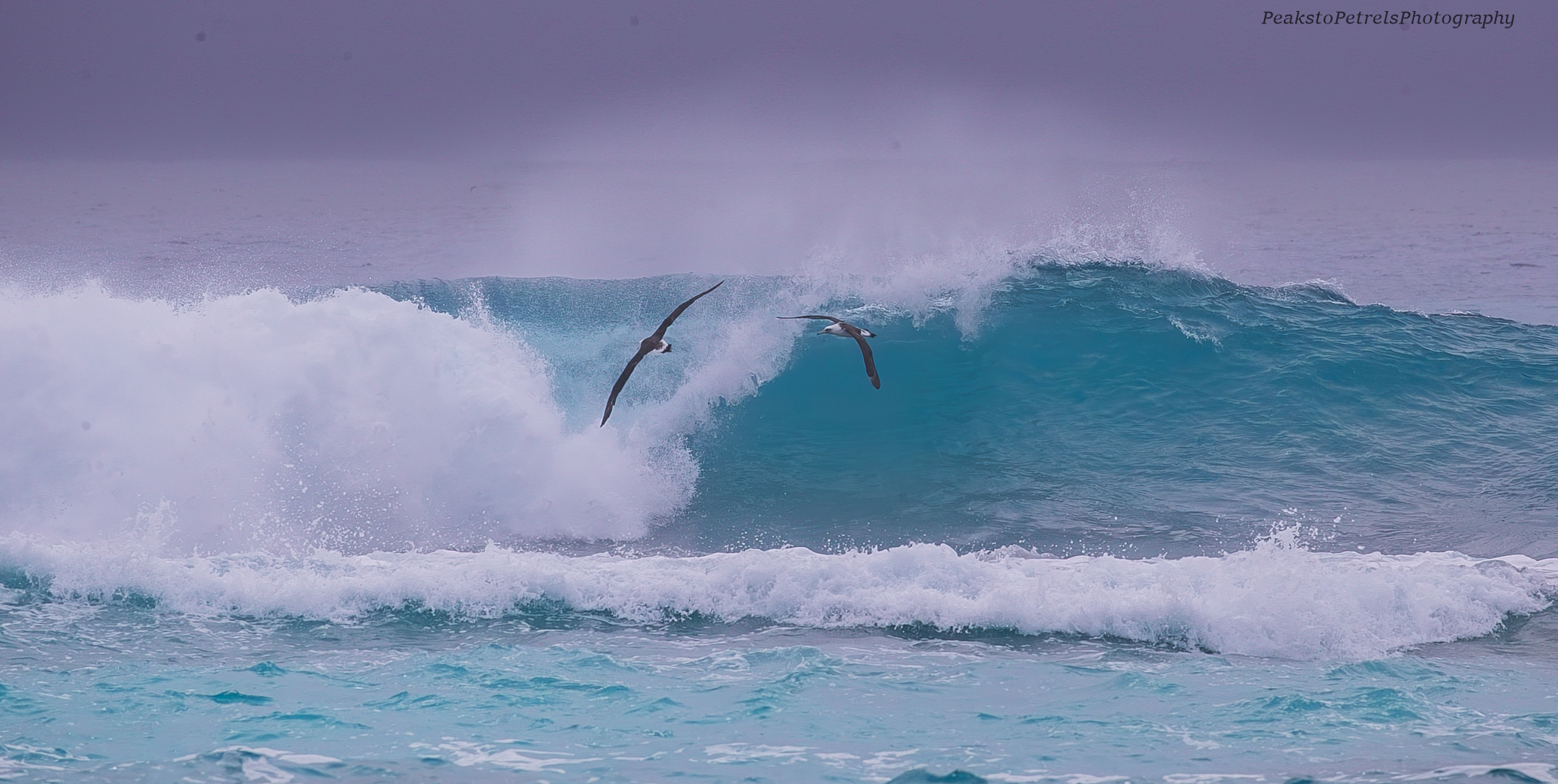
Laysan Albatrosses (mōlī) ride the wind over the Hōlanikū reef
A budding seabird scientist, I am undertaking an MSc on Procellariiformes at the University of Auckland in New Zealand but have taken a break to wait for my study species’ breeding period to commence. I was looking for ways to fill that time productively with seabird conservation work which could also be used as career springboard into remote, sub-Antarctic seabird science and fieldwork positions in the future. I saw an advertisement on the Kure Atoll Conservancy Instagram page, loved it immediately, applied, was interviewed, and am now spending seven months in the middle of the ocean. I have always dreamed of working with albatrosses. Especially now, having been here for three months, I believe I have found my life’s work in albatross conservation science, and in communicating to the public about their plight.
Life on Hōlanikū is essentially being totally immersed in the lives of breeding albatrosses. When I first arrived here and was getting to grips with the camp and its systems, none of the albatrosses had arrived. Then a few ka‘upu began appearing, then four, eight, a few dozen, and suddenly there were hundreds lining the shores. Soon there were also a few mōlī, and before I knew it, tens of thousands of them were filling the open fields, sprouting up like we were farming them, white heads bobbing; heads up to the sky screaming, mooing, dancing; and filling the skies with their graceful shapes.
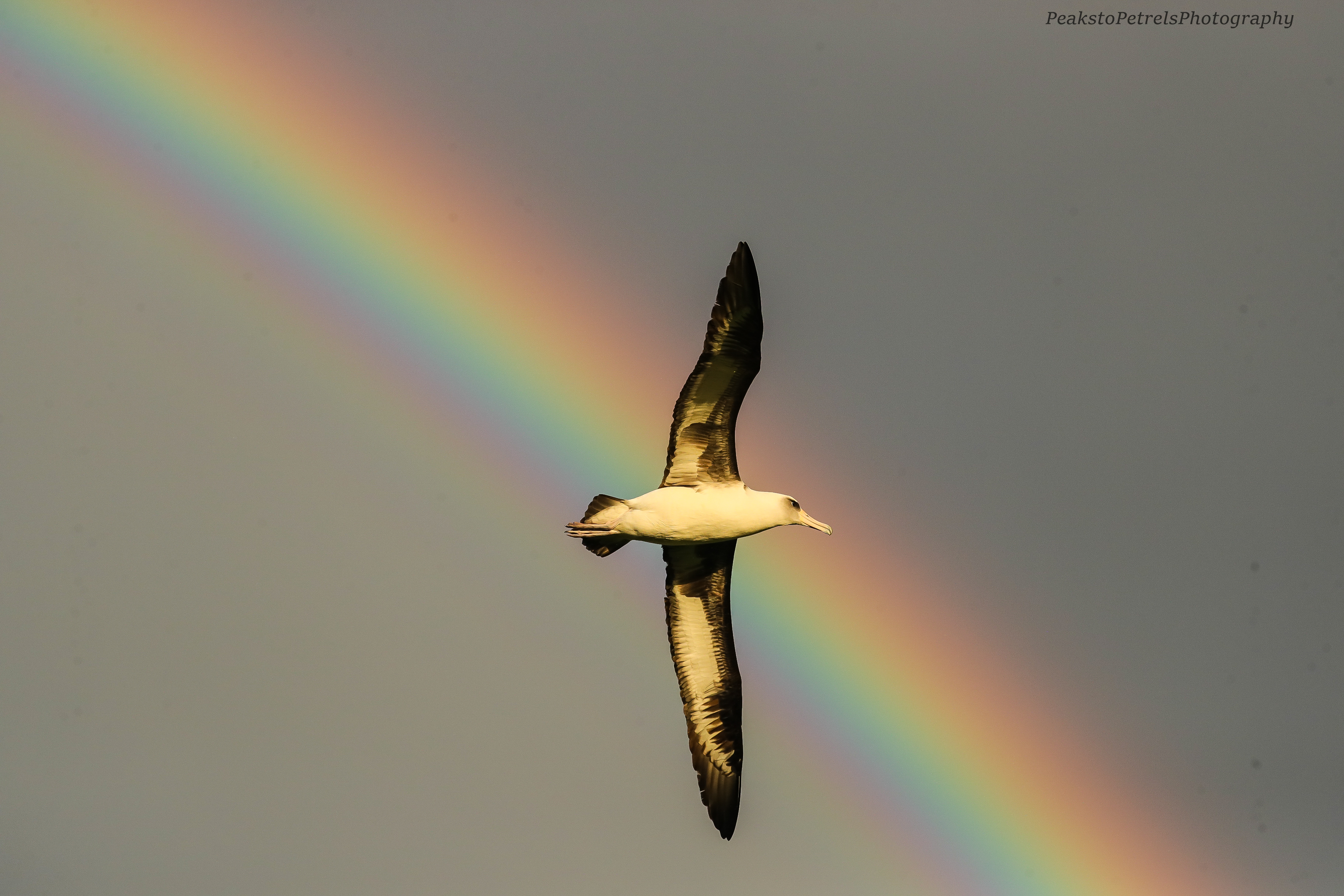
A mōlī flies in front of a rainbow on Hōlanikū
I was excited and overwhelmed with awe at being able to live and work in this colony of albatrosses, as I still am. I set about recording every aspect of it that I could, and sharing it via photographs, videos and a blog on the Kure Atoll Conservancy Facebook page in order to open human eyes to the beauty, complexity, intelligence and charisma of these birds, which are under acute threat by an unholy trifecta of long-line fishing, plastic pollution and loss of breeding habitat. I shower with albatross, I hang up my laundry stepping around albatross, I use the latrine next to an albatross. Albatross dance, court and nest outside my window. I work amongst albatross, I dream of albatross, write about albatross, think about albatross, smell them, hear them, see them. My idea of heaven on earth.
Our purpose in being here is in the first instance to restore Hōlanikū seabird habitat to maximise the island’s potential as a seabird breeding ground. This comes primarily in the form of invasive plant eradication. Enemy number one is Verbesina encelioides, a plant introduced to Hōlanikū during the Coast Guard years and which can spread like wildfire. It covers viable albatross breeding habitat by growing in tall, dense stands, creating a hot micro-climate which poses problems particularly to chicks during the hot summer. It dies back in the winter, leaving the ground exposed to high winds. Its roots additionally do not result in good soil stabilisation, threatening both the integrity of the island itself and disallowing the presence of dense numbers of burrowing seabirds. In 2002 the Kure Manager Cynthia Vanderlip started to rid the island of invasive plants such as Verbesina and in so doing to help the seabird population rebound. Since then, crews have been coming out on expeditions to conduct habitat restoration as well as seabird monitoring activities. We also target other invasive plant species such as Cenchrus echinatus, Cassytha filiformis, Flaveria trinervia, Solanum americanum and Beach Heliotrope Tournefortia argentea.
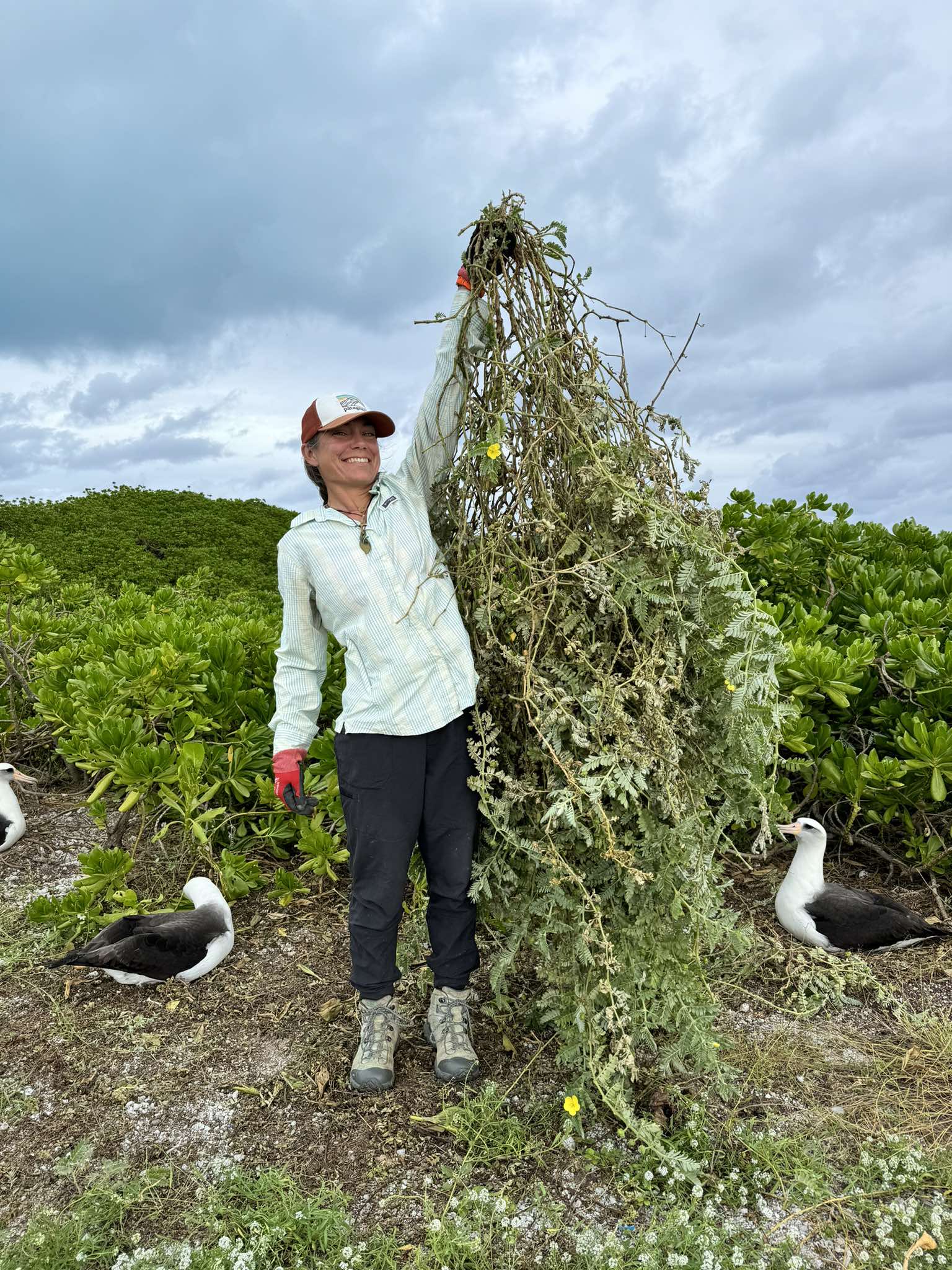
I am brandishing a large Tribulus cistoides plant. Although native, they are removed from the runway as their spiky seedheads can puncture albatross feet on the hard surface. Photograph by Nadia Borg
Shoring up the islands upon which these birds breed is crucial in our world of accelerating change, one where albatrosses are plagued with threats everywhere and in all their life-history stages. I have seen many remnants of last year’s fledglings with their ribcages cupping a large handful of plastic.
My day normally starts with rising before dawn and bringing my coffee down to the beach and sitting with the ka‘upu by starlight. My work is variable, but generally consists of treating invasives, transecting one of the 44 restoration areas into which the island is divided, and covering as much ground as possible while still being thorough. Depending on the day and the weather, I could also be conducting my tracking work on ka‘upu, such as retrieving, programming, and deploying GLS tags. These long-duration leg tags will collect ka‘upu movements for one to two years and fill gaps about at-sea ranges and fishery overlap hotspots during the incubation, breeding and non-breeding periods.
My other work ranges from camp maintenance, upkeeping the infrastructure in place for the Critically Endangered koloa maoli (Laysan Duck Anas laysanensis) and conducting the annual albatross occupied nest count. Between the five of us, over 164 survey hours, we obtained totals of 37 914 mōlī nests and 3042 ka‘upu nests. I then end my day down at the pier with the ka‘upu again, looking out to sea at the sunset.
A challenging reality of the work on the atoll are the seabird burrows. During my time on Hōlanikū, tens of thousands of nunulu (Bonin Petrels Pterodroma hypoleuca) will breed underground, along with a significant population of ‘ua‘u kani (Wedge-tailed Shearwaters Ardenna pacifica) and several hundred (we think) ‘akihike‘ehi‘ale (Tristram’s Storm Petrels Hydrobates tristrami). When walking around, one must be on the constant lookout for burrows. When one is crushed it must be dug out to ensure birds are not left buried. I have often found myself shoulder deep in sand, digging it out as fast as it slides back in.
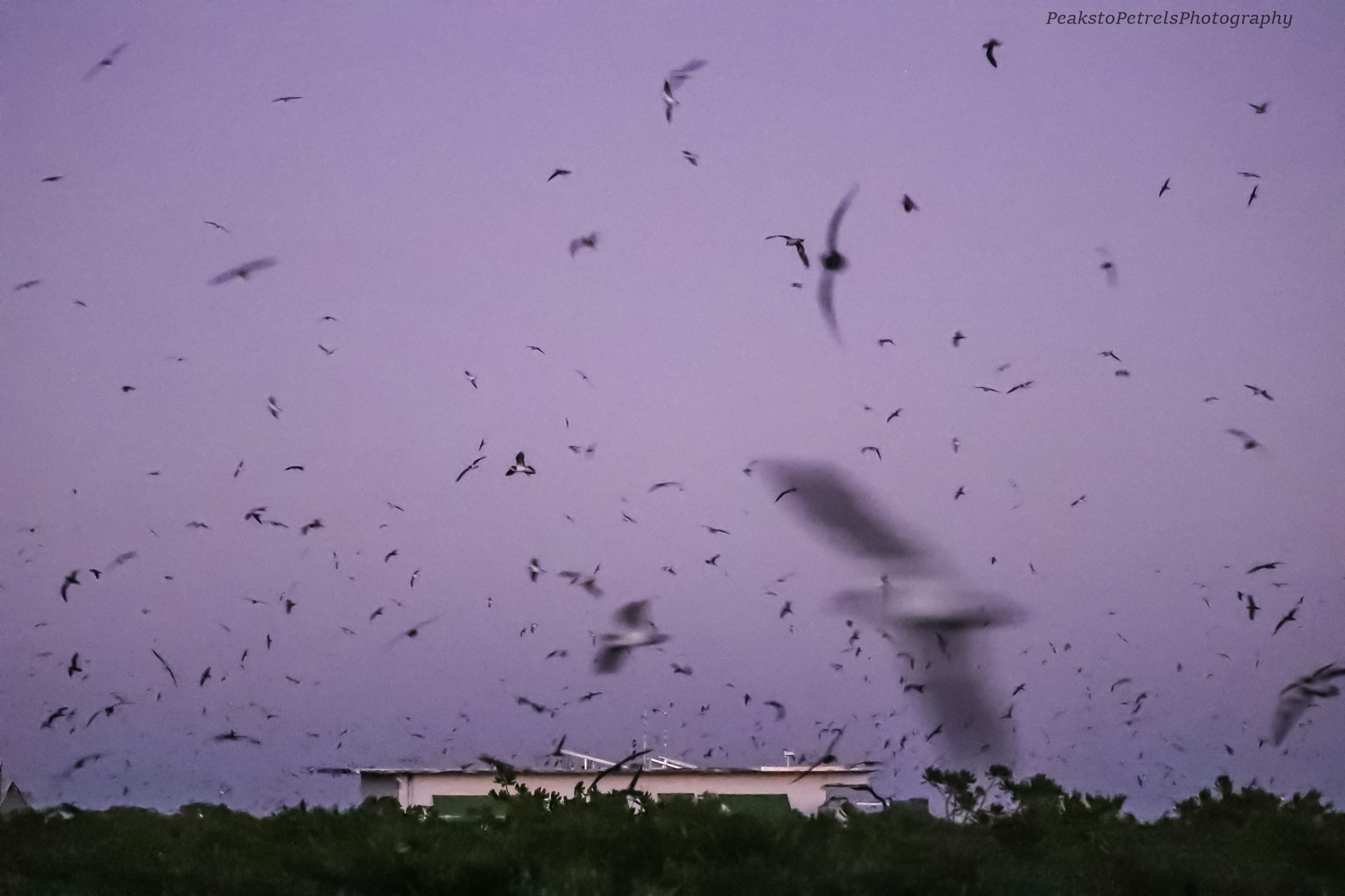
Clouds of nunulu darken the skies every night on Hōlanikū
Bushwhacking through thick naupaka, a native bush, whilst being bitten by breeding albatrosses (sometimes we need to get close to them to access a weed, or to dig out a burrow, but we always try to respect their space) and being stung by wasps, can be trying! We work hard here, we take our jobs as custodians of the island seriously, but we are highly rewarded by the experience. Although working on Hōlanikū has its challenges, and is not for the faint of heart, conducting the work is a huge privilege. Few people, in the grand scheme of things, have ever been here, and certainly no one can come here anymore unless in a research or restoration capacity.
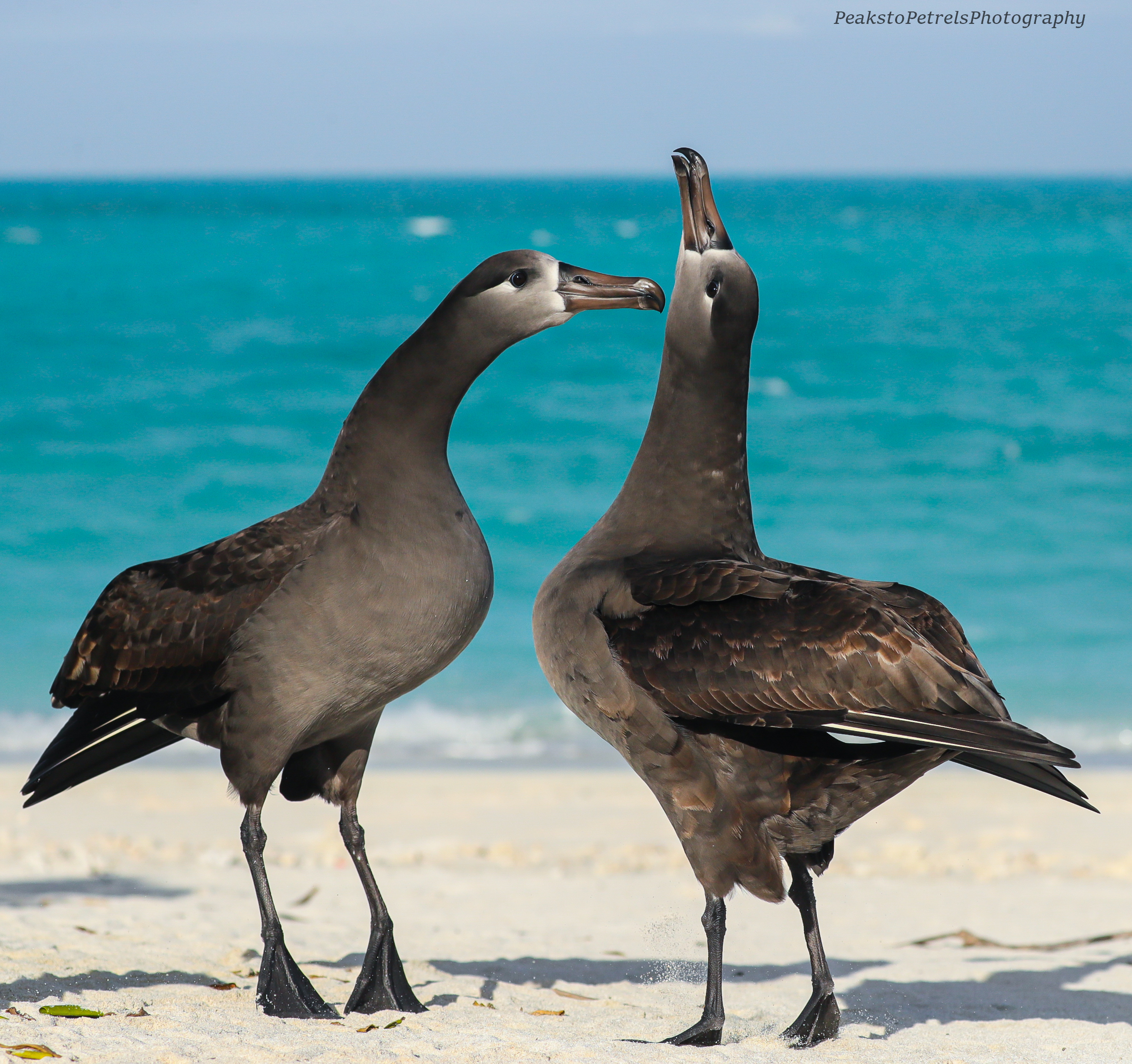
A pair of ka‘upu doing the ‘together-tippy-toes’ move
A highlight so far of the season for me has been in watching the albatrosses interact with one another, and with me. The ka‘upu courtship dance, for example, is truly remarkable in its energy, complexity and duration. My favourite is the ‘together-tippy-toes’ move where, after tucking a head under a wing for the ‘preen’ move, one bird shoots its head up, head pointing straight up towards the sky, chest round and puffed out, and stands on its utmost tip-toes. The other bird, within a split second, matches the first, reaching up on tiptoe with its bill to touch the first’s, their chests bumping together (sometimes they do this move so enthusiastically that the second bird nearly knocks the first one over). The day when the final plumage phase makalena (Short-tailed Albatross Phoebstria albatrus) showed up was memorable too – watching this individual ‘rain-nibbling’ (drinking falling rain) was a gift, and to see its golden head feathers shimmer and shine in the early morning light.
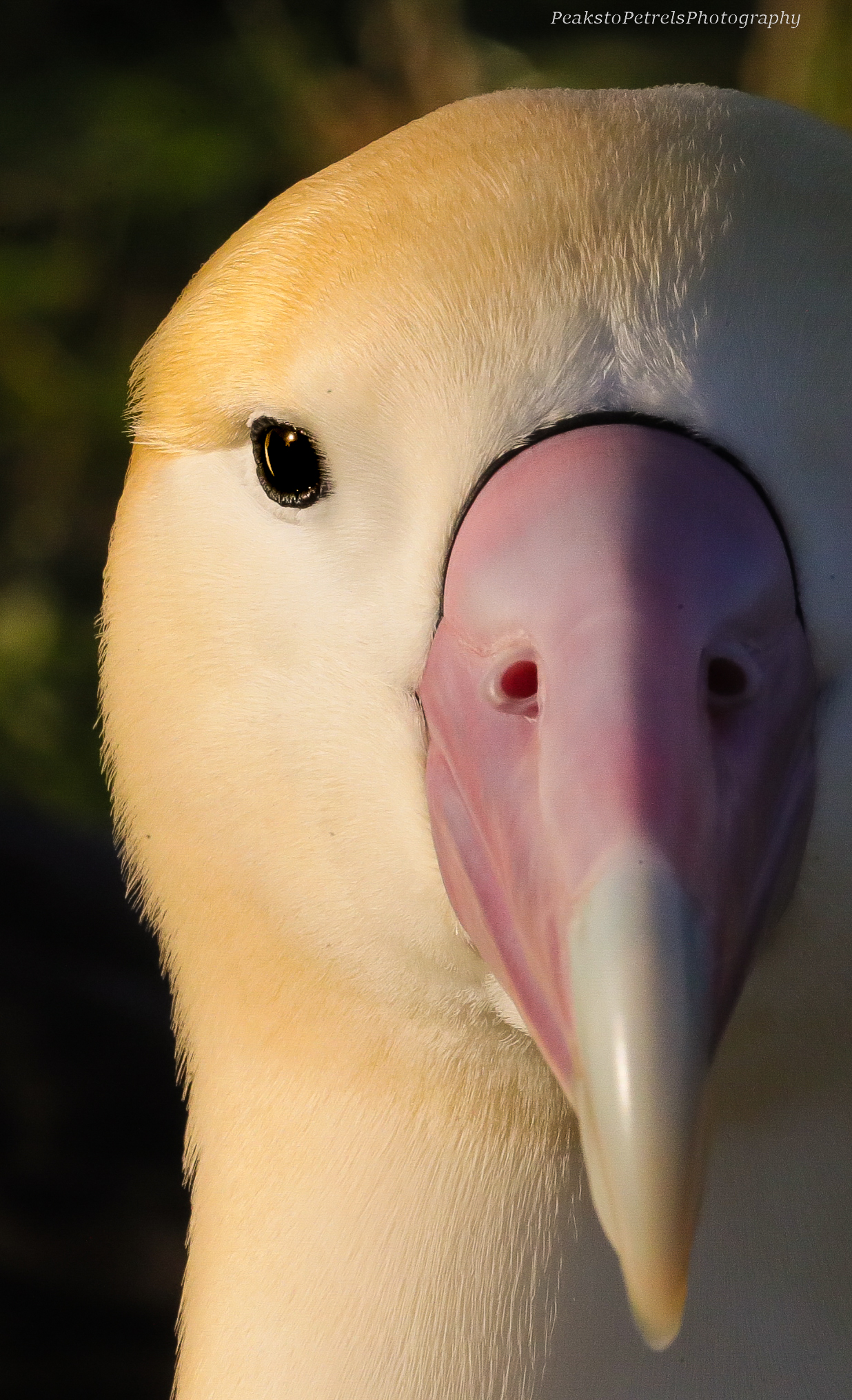
The final-stage makalena (Short-tailed Albatross) in the golden-hour light
I am truly privileged to live and work in the midst of an albatross colony, amongst birds who are not afraid of me, and instead gaze at me with mild curiosity. In the field of seabird conservation, it is important not to lose one’s sense of wonder amidst all the serious work and science. Stopping to appreciate the beauty of what we still have, and treasuring that – a wingtip trailing a wave, a hard tack into the wind, an eye sparkling with morning light, a parent’s soft calls to its newly hatched chick. These moments, these memories, are our fuel in the fight to protect the albatrosses of the world.
I am deeply thankful to the Kure Atoll Conservancy and to Oikonos for the chance to do the work I am doing, and to my crewmates. Sand in my hair, dirt under my fingernails, seabird poop in my pockets, petrel-musk on my clothes, wave-sound in my ears. There is no better way to live and may we all know such happiness at least once in our lives. Mahalo and fair winds!
Isabelle Beaudoin, Peaks to Petrels Photography, Kure Atoll, 11 February 2025
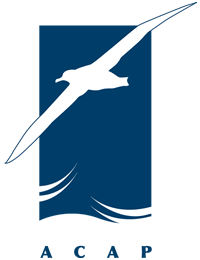
 English
English  Français
Français  Español
Español